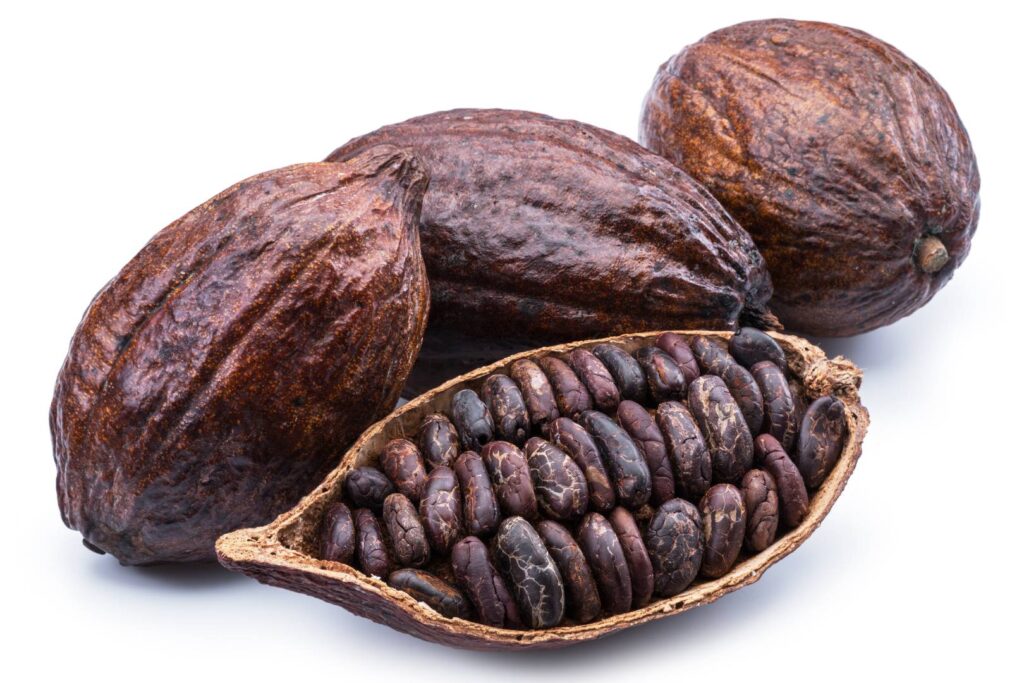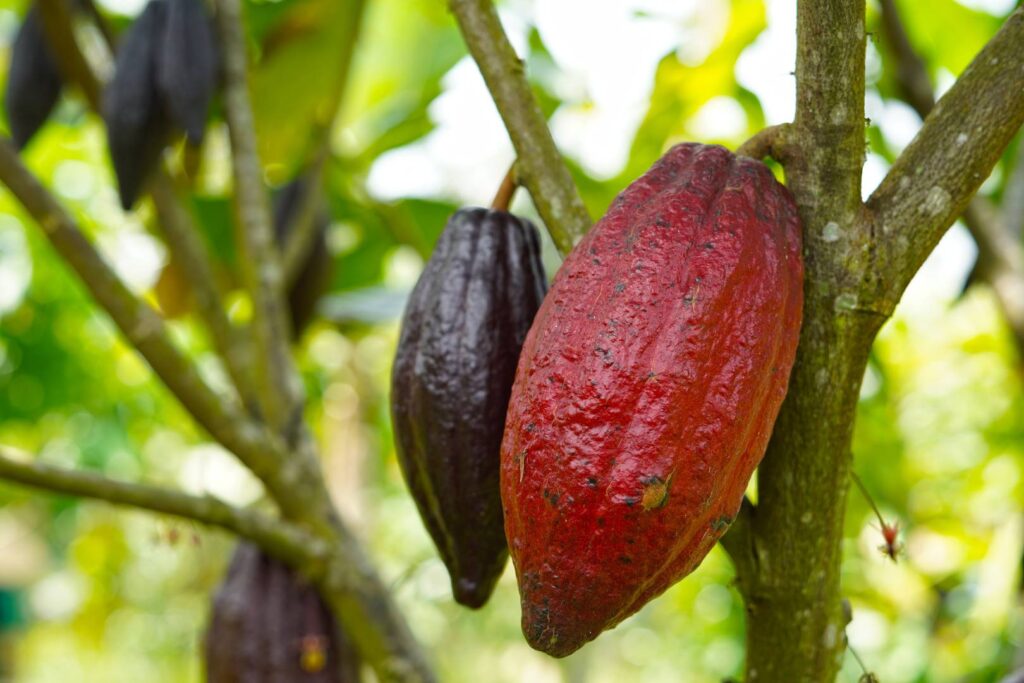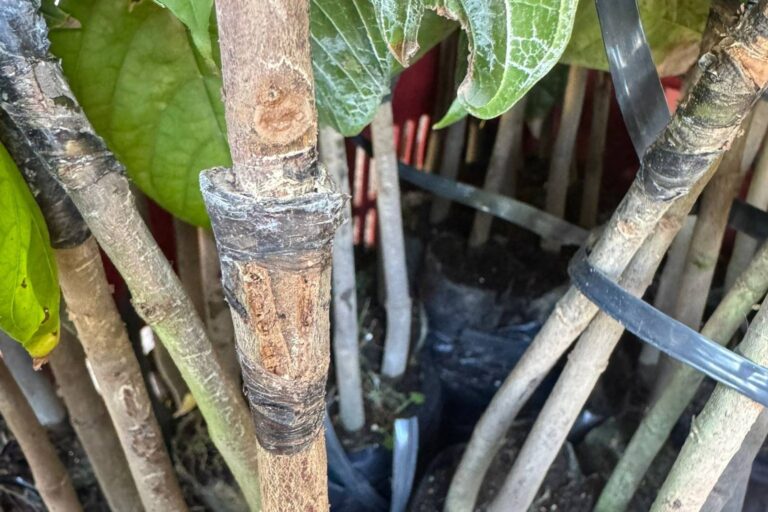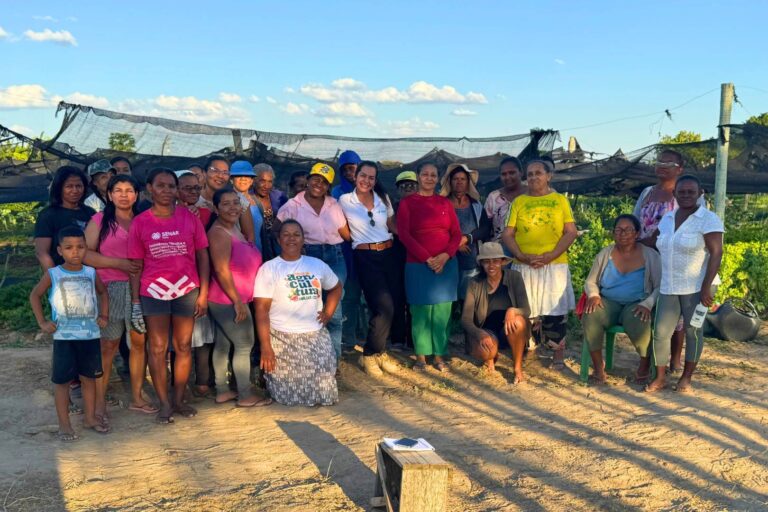From heirloom varieties prized for their complex taste to hybrid types bred for disease resistance, the science of cacao varieties is as rich as the chocolate it produces. At our farm, understanding and experimenting with cacao varieties isn’t just a passion—it’s a mission to create sustainable, high-quality cacao production.
In this article you can learn about the main cacao varieties, and how they adapt to their environment, and the flavor profiles they produce. Of course, we’ll also be looking at which cacao varieties can be more sustainable for farmers in specific regions, like our farm in Bahia, Brazil.
The Main Cacao Varieties: Criollo, Forastero, and Trinitario

Cacao is generally classified into three main groups: Criollo, Forastero, and Trinitario, each with its own characteristics:
- Criollo: Often referred to as the “queen of cacao,” Criollo is prized for its exquisite flavor. Its beans produce chocolate with fruity, floral, and nutty notes. However, Criollo plants are sensitive to environmental changes and diseases, making them a challenge to cultivate.
- Forastero: The workhorse of the cacao world, Forastero accounts for the majority of global cacao production. It is robust, high-yielding, and disease-resistant, but its flavor is often described as more straightforward and less nuanced than Criollo.
- Trinitario: A hybrid of Criollo and Forastero, Trinitario combines the best of both worlds. It offers enhanced disease resistance while retaining much of the complexity in flavor associated with Criollo.
Each of these groups contains numerous sub-varieties. The sub-varieties or sub-types are typically adapted to specific climates and regions.
A Prized Heirloom Variety: Nacional
Among the standout varieties is Nacional, originally from Ecuador. Renowned for its floral and fruity aroma, Nacional is one of the most prized cacao types in the world. While it shares some similarities with Criollo in terms of flavor profile, it has unique genetic characteristics that set it apart. Its beans produce chocolate with deep flavor and complex flavor profiles, making it a favorite among artisanal chocolatiers.
However, like Criollo, Nacional is sensitive to diseases and requires careful cultivation. Its rarity and exceptional quality have made it a symbol of heirloom cacao excellence.
The Role of Genetics in Flavor and Resiliency

Cacao’s genetic diversity results in different flavors and abilities to resistance to pests and climate change:
- Flavor Development: The chemical compounds in cacao beans are influenced by their genetic makeup, affecting everything from bitterness to floral notes. For example, Nacional cacao from Ecuador is renowned for its floral and fruity aroma.
- Resilience to Climate Change: With shifting weather patterns and increasing temperatures, genetic diversity is key to developing cacao varieties that can withstand drought, pests, and diseases.
At our farm, we work with local experts and researchers to experiment with different varieties and find those best suited for our semi-arid conditions in Bahia, Brazil. You can learn more about our innovative nursery where we discuss how new varieties are prepared for planting in the field.
Cacao Varieties and Sustainability
Sustainability is a cornerstone of cacao cultivation for Peirot and an important part of the future of chocolate. Different varieties have unique needs for water, nutrients, and shade. By selecting the right types for each environment, farmers can:
- Reduce Inputs: Using varieties adapted to local conditions minimizes the need for fertilizers and irrigation.
- Preserve Biodiversity: Maintaining a diverse range of cacao trees supports ecosystem health and provides habitats for wildlife.
- Enhance Resilience: Varieties resistant to diseases like witches’ broom (which devastated Brazilian cacao in the 1980s and 1990s) reduce the need for chemical treatments.
Using shade trees and intercropping like we do at Peirot further bolsters sustainability. Cacao trees thrive under a canopy, and introducing complementary crops like coconut trees creates a balanced ecosystem that benefits all plants.
Future Directions in Cacao Science
The future of cacao lies at the intersection of tradition and technology. DNA analysis and genetic mapping are unlocking new possibilities for breeding programs. With these tools, farmers can:
- Predict how varieties will perform in specific environments.
- Develop trees that mature faster, allowing for quicker adoption of improved types.
- Enhance flavor consistency while maintaining natural biodiversity.
As Brazil continues to reclaim its position as a global leader in cacao production, innovation and sustainability will play pivotal roles. Our farm is proud to contribute to this renaissance, blending cutting-edge science with a deep respect for the heritage of cacao.
Conclusion
We hope you enjoyed learning more about the different cacao varieties, from flavor and quality to sustainability and resilience. By understanding and experimenting with different types, we’re not just growing cacao—we’re nurturing a future where Brazilian cacao can once again stand among the world’s finest. Stay tuned as we share updates on our experiments, discoveries, and more!




